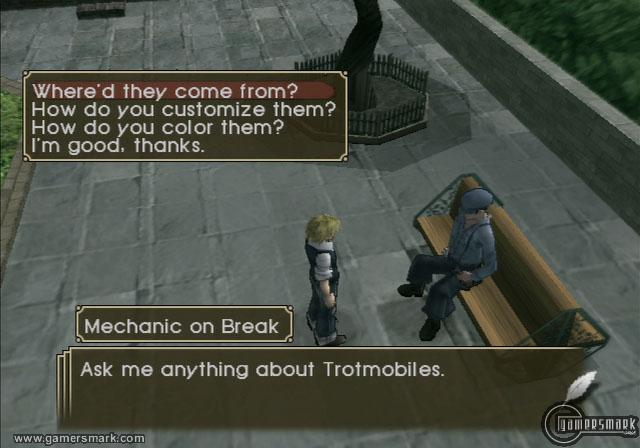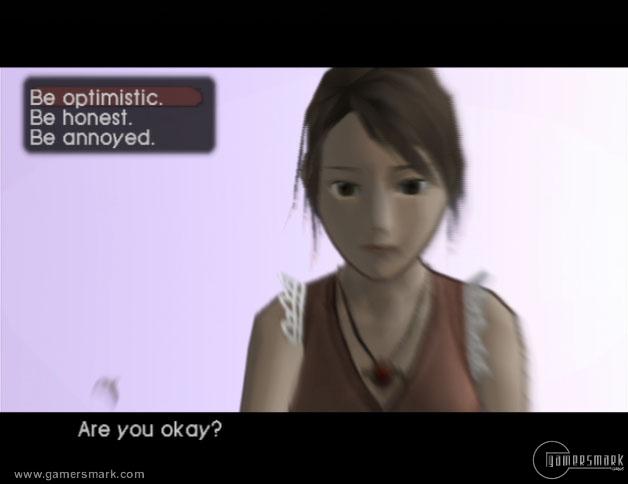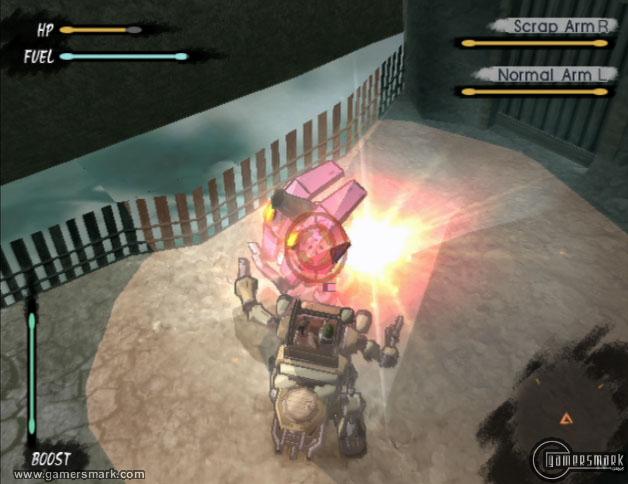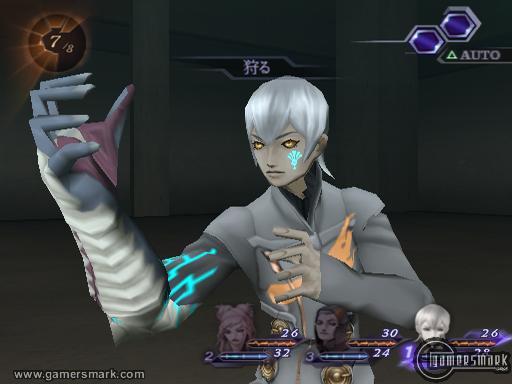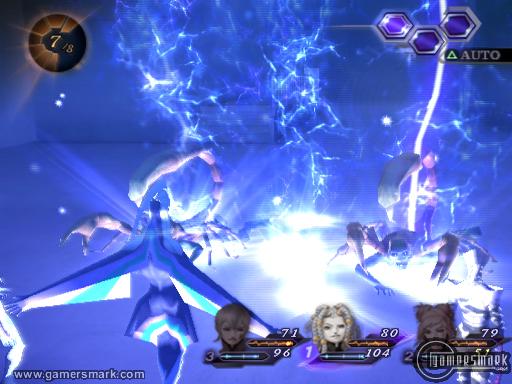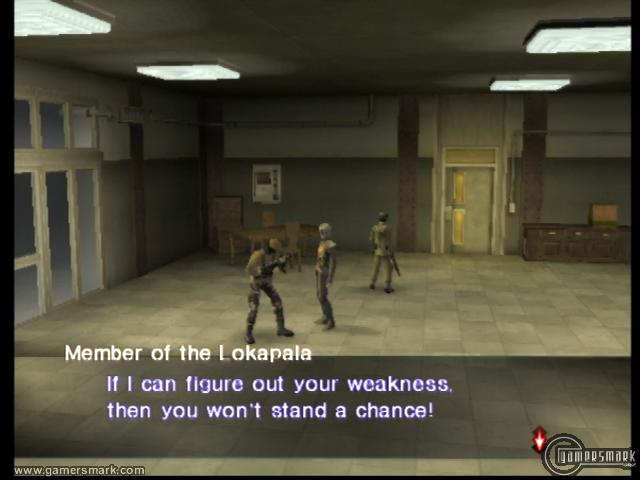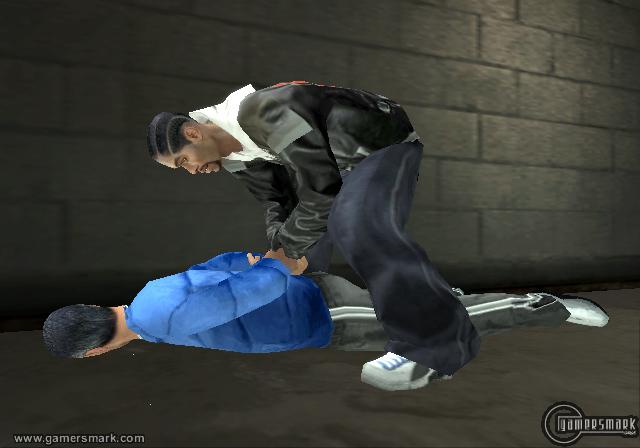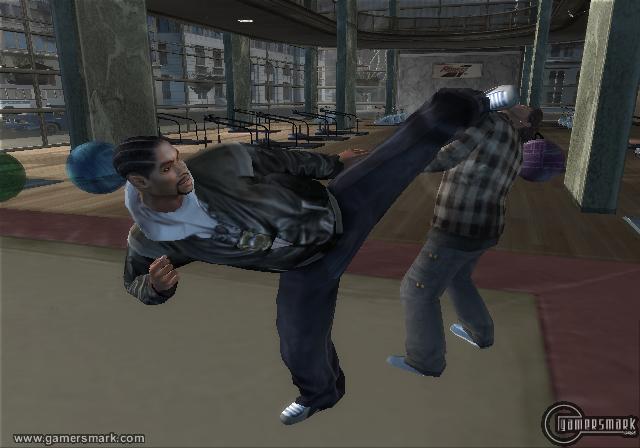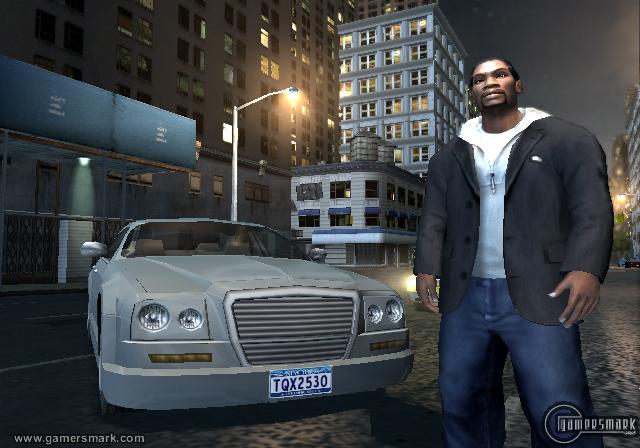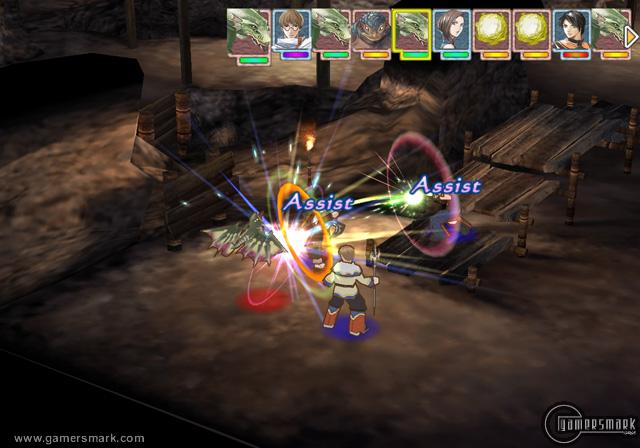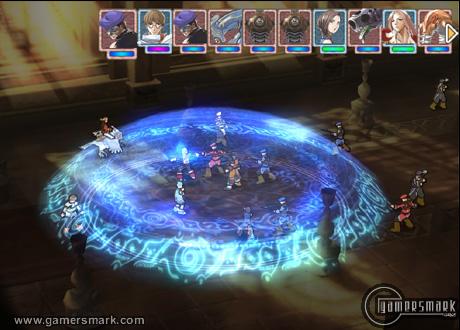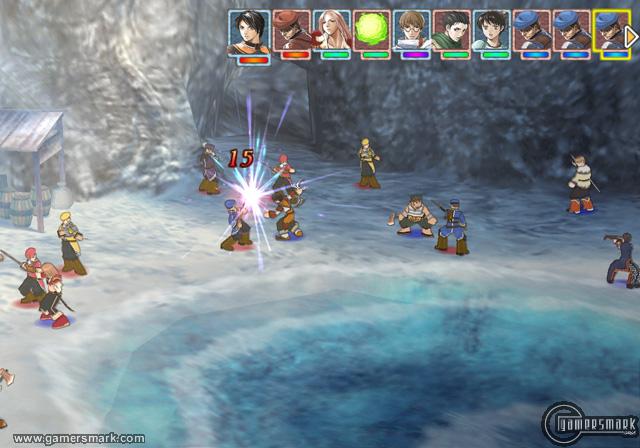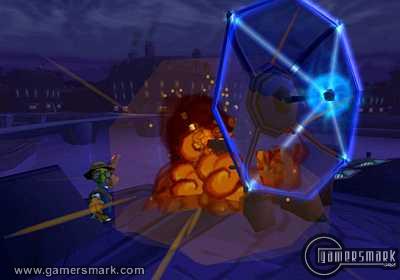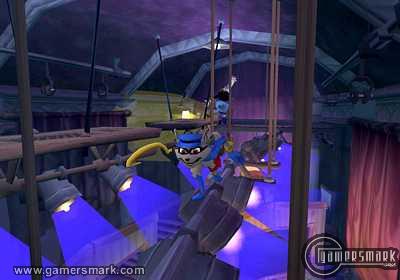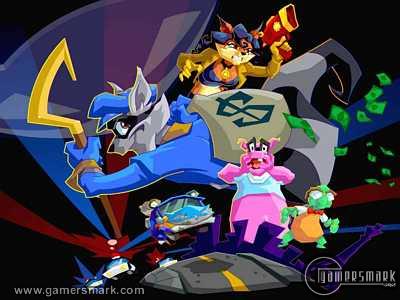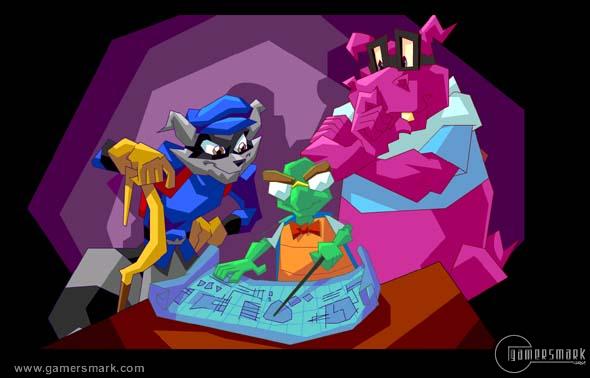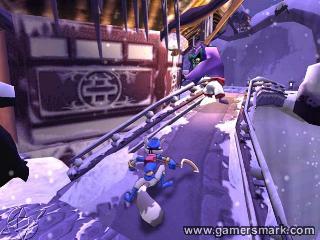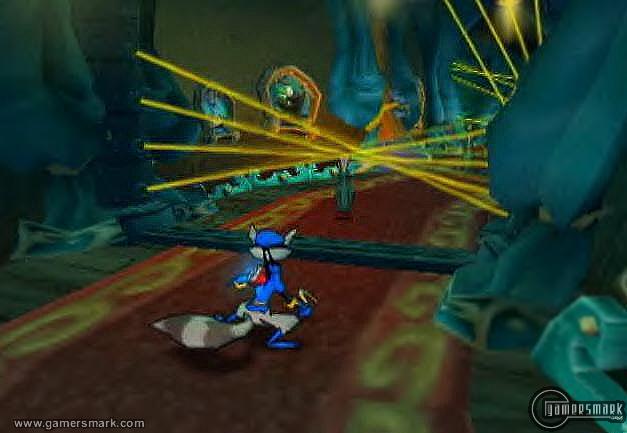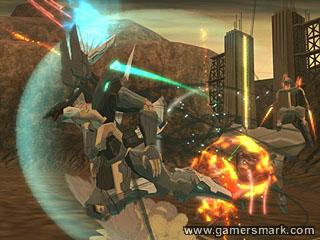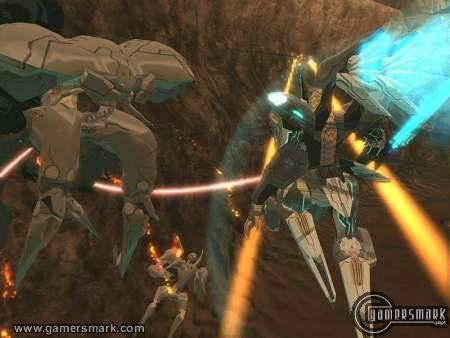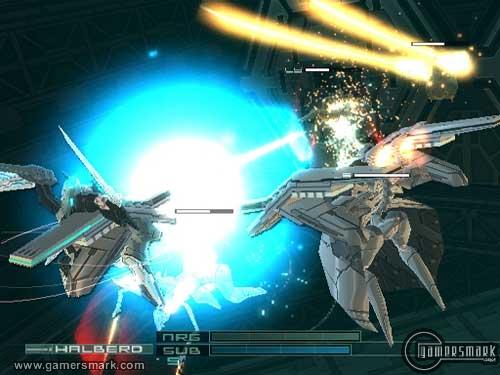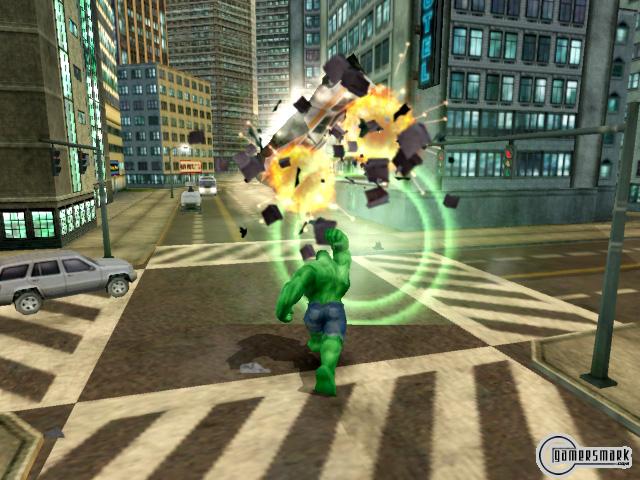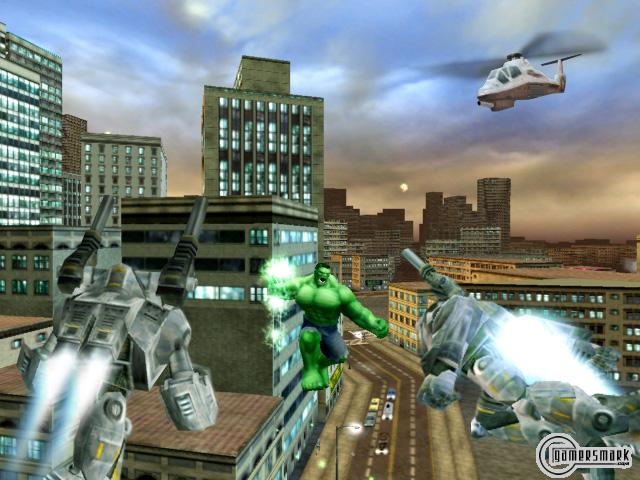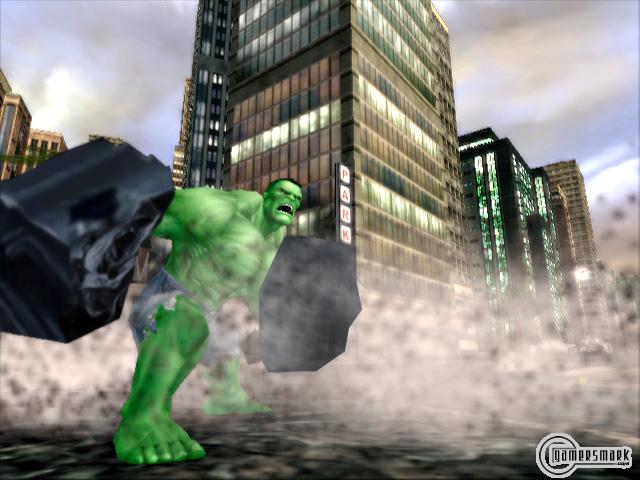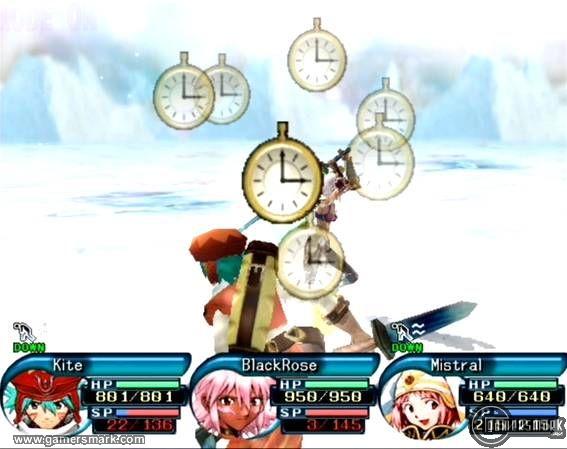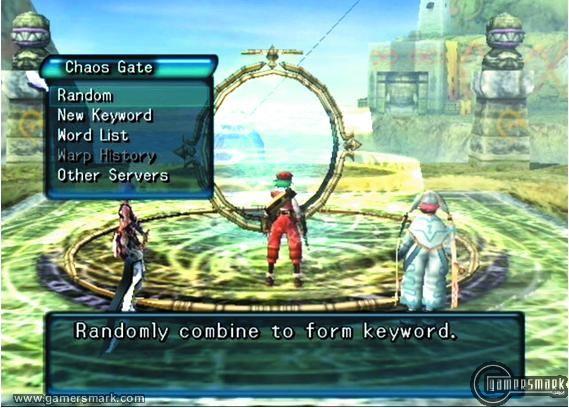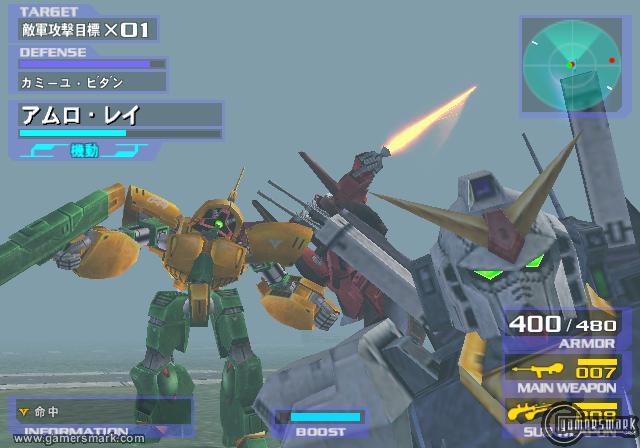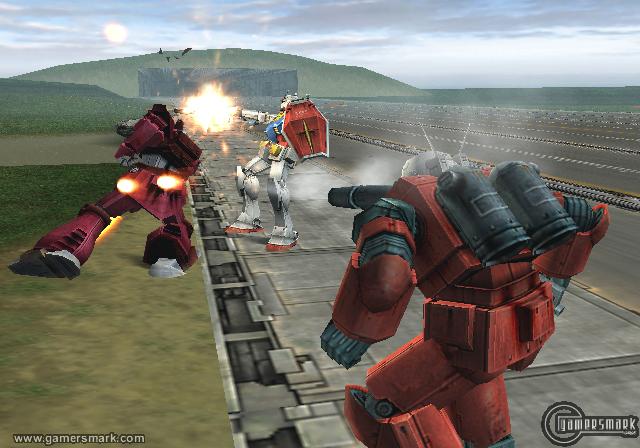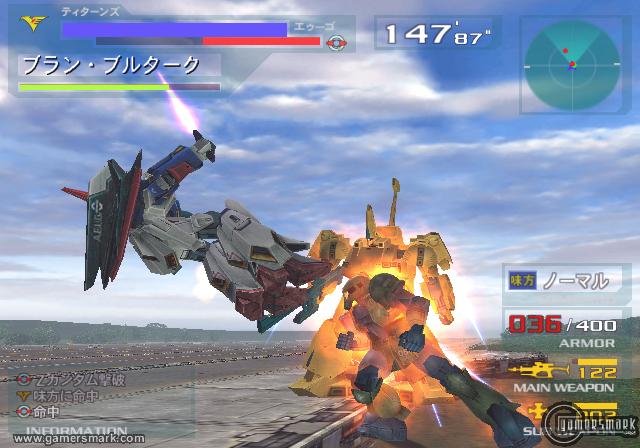Developer/Publisher: Bandai Games || Overall: 7.2/10
Gundam video games have the potential of being some of the most fun around. This is simply due to the fact that the games feature giant robots with big guns blowing the crap out of each other and their surroundings. I sort of feel sorry for those who do not find this type of stuff entertaining, because if you haven’t guessed already, I love these types of games. The Front Mission and Zone of the Enders series are two of my favorites and there’s definitely room for more of these type of games for me to love. However, Mobile Suit Gundam: Gundam vs. Zeta Gundam lacks many things needed in vital areas thus making it not as fun as it could’ve been, but its still fun nonetheless. Gundam vs. Zeta Gundam features over fifty mobile suits to pilot, thirty-one of which are completely new.
Gundam Vs. Zeta Gundam mirrors the anime series of the same name. While the plot of the anime is the basis of the whole game (in terms of characters, mobile suits, and situations), the actual story is not represented well at all. Most of the story is delivered through objective summaries, character sound effects, and events during gameplay. Scenes from the anime or even a simple voiceover could’ve worked wonders and made things make more sense, but they aren’t featured anywhere in the game. Of course, someone who is a follower of the series will understand everything that is happening and as a consequence for those who have not seen the anime, like me, I have a feeling that I could’ve enjoyed the game more if I even knew what the heck was going on. After a little bit of research, though, I found that the Mobile Suit Gundam: Gundam vs. Zeta Gundam anime takes place after the original Mobile Suit Gundam (which represented the One Year War), which I did watch semi-frequently. Lending some knowledge I had from watching the original anime, I understood a little bit more about the things that were happening in the storyline of the game, since it took place in the same universe. Mobile Suit: Gundam Vs. Zeta Gundam features a few of the characters from the original series in addition to new ones. Assuming that the whole Gundam Vs. Zeta Gundam anime series is represented in it, someone that is a fan of the series will definitely enjoy the game, reliving and fully interacting with the experiences. It just won’t come off as well to someone who doesn’t know much about it.
A major strong point of the title is that it is not short at all. Even just restricted to the single-player modes, you will be playing for a long time. The main modes, being Arcade and Universal Century Mode, will take the majority of the time you spend on the game and while there are multiplayer features, none are online. In Arcade mode, you basically pick which mobile suits you want to use for Ground and Space and then off you go. You chose the difficulty level and everything, and once you get through it, you want to have as many points as you can so you can get on the high score board.
Universal Century Mode is where the real game begins. The mode chronicles the series from the demise of the Earth Federation in which rival factions clash for control of Earth and its space colonies. Being a stricter adaptation of the anime than Arcade mode is, you’ll play as the “influential” pilots that had made their way in the series, and learn little parts of their story, such as why and how they joined the faction they’re a part of. You will play all sides of the battle from different perspectives of the respective pilots; however, the different “perspectives” aren’t very apparent except for the character voices being played and which side you are on in the conflict. So, you’ll end up being able to play as many different pilots for one faction as you follow their independent (but sparse) story. If you don’t pay attention to this story element, it will seem like you’re playing the same battles continuously over and over, since many pilots participate in the same particular battles (albeit, like the anime, probably). On top of that, there are three factions you can chose from (the AEUG, Titans or Axis), each having their own repertoire of different pilots, so you’ll be able to, as mentioned before, play on all sides of each conflict. The game is truly loaded with gameplay, and may seem a little daunting to get through all of the missions. However, the immense amount of playability comes mostly due to playing the same levels over and over with different pilots and under different storyline-circumstances, and it can get very repetitive. The way the mode works is by following events on a timeline, as you follow the pilot’s sequence of events. Sometimes, though, when a character is technically supposed to die in the anime, you can change their fate by not dying during the mission they were supposed to die in. This results in a splintering of the main timeline for that character, and shows what would have happened had they survived. Sometimes when a character lives instead of dies, it can splinter off an alternate path for another pilot as well. While this concept is interesting, it really doesn’t accomplish much except attaining more chances to replay the same battles again except this time with another partner who does nothing differently and does nothing in a unique way that would make it seem like it was worth having the person survive. To top it all off, when you complete a certain pilot’s storyline, the ending sequence says what happens to the character, but says something to the effect of “there could have been other choices, play through the character’s timeline again!” I don’t think anyone will be that obsessed with the title to replay every level in a person’s timeline due to the extreme repetitiveness of battles. Gundam vs. Zeta Gundam’s gameplay can be fun, but only in short strides.
While the controls don’t feel as natural as they should, they can get the job done once you get used to them. However, when in a space battle, which is by far the most frustrating part of the game, the controls become very difficult to use due to some funky moving issues that don’t allow you to move as well as you should in a full 3D arena. Granted, the machines that are flying through space are supposed to be clunky because of their nature, and mobile suit pilots in the animes have trouble commandeering their robots quite frequently, it ends up being more of a frustrating control issue than any sort of homage to the anime. Also, maybe it’s supposed to be gravity or something, but it is really hard to simply move around in space. Having no way to control the camera does not help the cause either. Sometimes when you’re doing nothing, you will slide away to a point away from where you were, drawing farther away from where you were, forcing you to almost struggle to boost away from where you were sliding so you can re-enter the battle. The biggest downside to the whole fighting system is how you’re not allowed to hurt your enemy unless the target on them is red. They will usually turn to yellow after hitting them a certain amount of times. If you try to attack them while the target is yellow, your attacks will very unrealistically (and stupidly, I might add) go right through them; whether it was a rocket or a freakin’ beam sword. This will force you to hold back on your attacks until the target is red again, stopping any chances of relentless combinations and attacks on a particular enemy – a far cry from the sword-slicing-in-half action I’m accustomed to seeing in a Gundam anime. What Universal Century Mode ultimately comes down to is a lot of play time, and that is definitely the game’s main strong point, especially if you enjoy the gameplay or playing with different mobile suits. Containing over 200 missions isn’t too shabby either, even if many of them are repeats. The structure of the game is based on battles rather than being adventure oriented; they basically give you an arena to fight in and send mobile suits to kill you or be killed by you.
The Gallery mode in the game persuades the player to play through it and all its different modes to unlock gallery items, allowing you to learn more about the mobile suits that can be played, as well as viewing illustrations, hearing character speech, and looking at all the different parts of the game. The information about the Mobile Suits in the Gallery mode really should have been put into the main part of the game so you would better understanding of them before you chose them, but at least it exists in some way, even if you do have to unlock it first. The mobile suits are more or less unique in what they do, and each has a relatively unique experience while piloting them. Different combinations of weaponry, speed, strength, armor, and special abilities (if available) can influence one to try out each mobile suit and find one you like the most.
The sound is pretty good. The music, character speech, and sound effects are all ripped straight from the anime. The use of the old sounds from the show gives Gundam vs. Zeta Gundam a cool feeling, making it feel more like the anime. However, a main problem with the game is how the sound effects and background music totally overcome the limited amount of character speech that is used during missions, often making it inaudible, even when you turn down the sound effects and background music to a level you still want to be able to hear them at. Regardless, the character speech really should have been integrated better, because it’s also hard to understand what they even say sometimes. The graphics are pretty good for a PlayStation 2 game, definitely being at the level that most games at this point in the life of the PlayStation 2 should look like. Attention to detail is really what makes the mobile suits look cool.
While Mobile Suit Gundam: Gundam vs. Zeta Gundam can be a quite enjoyable game to play in short bursts, it really cannot be played for hours on end because of the repetitiveness of its mission structure. Although, if you like the anime series or the other Mobile Suit Gundam games, this game will definitely be right up your alley. If you’re not in the Gundam vs. Zeta Gundam anime crowd, unfortunately it may not garner the interest needed to really enjoy the game.

